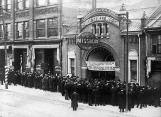1
In the mainly Anglo-Saxon neighbourhood of Cabbagetown, the working class community especially suffered from the effects of the Great Depression and later World War II.
In response CNH moved east in 1929, to 349 Sherbourne Street where, according to a 1943 annual report, "The husbands of many club members, in spite of large families, joined the Forces
at the outbreak of war because it would mean security for the family. This had a drastic and somewhat bitter effect upon the family concerned".
Social unrest fermented in the 1940s and 50s as evidenced by the rise in gang activity. Teens dropped out of high school to join the work force, becoming entrenched in the neighbourhood trap of poverty. According to a 1959 report, 42% of teenagers at CNH had criminal records or were on - figures that were also reflected in the Regent Park and Don District neighbourhoods' rates of juvenile delinquency. In one instance, the infamous "Riverdale Rumble" pitted the self-titled 'Spadina Spooks' and 'Regent Park Regents' against the 'Working Boys Home for Toronto'.
CNH also experienced the episode of the broken pianos when windows and instruments were destroyed by vandals using Club cues and billiard balls.Yet, headworker, Helen Sutcliffe and staff opted to work directly with the 100 members of the "Cabbagetown Gangs" providing sports, cultural and leadership clubs that fostered youth leadership skills in a positive direction.
As Cabbagetown became more diversified, Central Neighbourhood House adjusted its programming to allow for the changing immigrant demographics. This ranged from the Chinese Women's Club, one of the first CHN adult clubs, to the more recent Somali women's group of the 2000s. The Italian Women's Club -- which originally met once weekly for tea -- continues to meet some 20 years later - members crossing town with their daughters and granddaughters t maintain the tradition of dancing the Tarantella.
In 1968, children poured out of the Central Neighbourhood House Sherbourne Street location, carrying bricks to solicit funds for building a new home on Ontario Street. While the pace of change in the Regent Park and
Cabbagetown neighbourhoods has accelerated, as former executive director, Jeanne Rowles, noted in 1971, "...the needs haven't changed but our understanding of how they can be met has matured."
2
Central Neighbourhood House at 349 Sherbourne Street1929
Central Neighbourhood House, Toronto
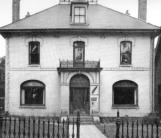 Credits:
Credits:Central Neighbourhood House Records
4
Central Neighbourhood House annual report, 19301930
Central Neighbourhood House, Toronto
 Credits:
Credits:Central Neighbourhood House Records
5
Social unrest fermented in the 1940s and 50s as evidenced by the rise in gang activity. Teens dropped out of high school to join the work force, becoming entrenched in the neighbourhood trap of poverty. According to a 1959 report, 42% of teenagers at CNH had criminal records or were on - figures that were also reflected in the Regent Park and Don District neighbourhoods' rates of juvenile delinquency. In one instance, the infamous "Riverdale Rumble" pitted the self-titled 'Spadina Spooks' and 'Regent Park Regents' against the 'Working Boys Home for Toronto'.CNH also experienced the episode of the broken pianos when windows and instruments were destroyed by vandals using Club cues and billiard balls.Yet, headworker, Helen Sutcliffe and staff opted to work directly with the 100 members of the "Cabbagetown Gangs" providing sports, cultural and leadership clubs that fostered youth leadership skills in a positive direction.
6
"Want funds to end Regent Park gangs," March 1965March 1965
Downtown Toronto
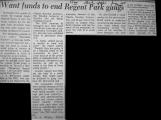 Credits:
Credits:Central Neighbourhood House Records
7
"From mischief to delinquency," May 1965May 1965
Downtown Toronto
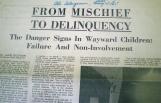 Credits:
Credits:Central Neighbourhood House Records
Toronto Telegram. May 26
8
"The Gangs of Regent Park," May 19651965
Central Neighbourhood House, Toronto
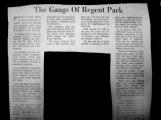 Credits:
Credits:Central Neighbourhood House Records
9
"Not enough money to stop teen violence, agency tells board," May 1965May 1965
Downtown Toronto
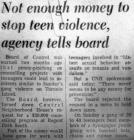 Credits:
Credits:Central Neighbourhood House Records
10
Central Neighbourhood House youth and staff, 1960s1960s
Downtown Toronto
 Credits:
Credits:Central Neighbourhood House Records
11
Helen Sutcliffe (centre kneeling) with Central Neighbourhood House staff and clients1950s-1960s
Central Neighbourhood House, Toronto
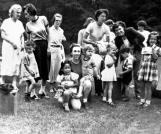 Credits:
Credits:Central Neighbourhood House Records
12
Boys playing ringette at Central Neighbourhood House1960s
Downtown Toronto
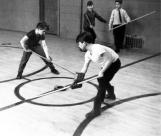 Credits:
Credits:Central Neighbourhood House Records
13
Summer day camp on Toronto Island1950s
Toronto Island
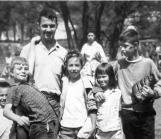 Credits:
Credits:Central Neighbourhood House Records
14
Boys basketballl at Central Neighbourhood House1950s
Central Neighbourhood House, Toronto
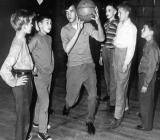 Credits:
Credits:Central Neighbourhood House Records
